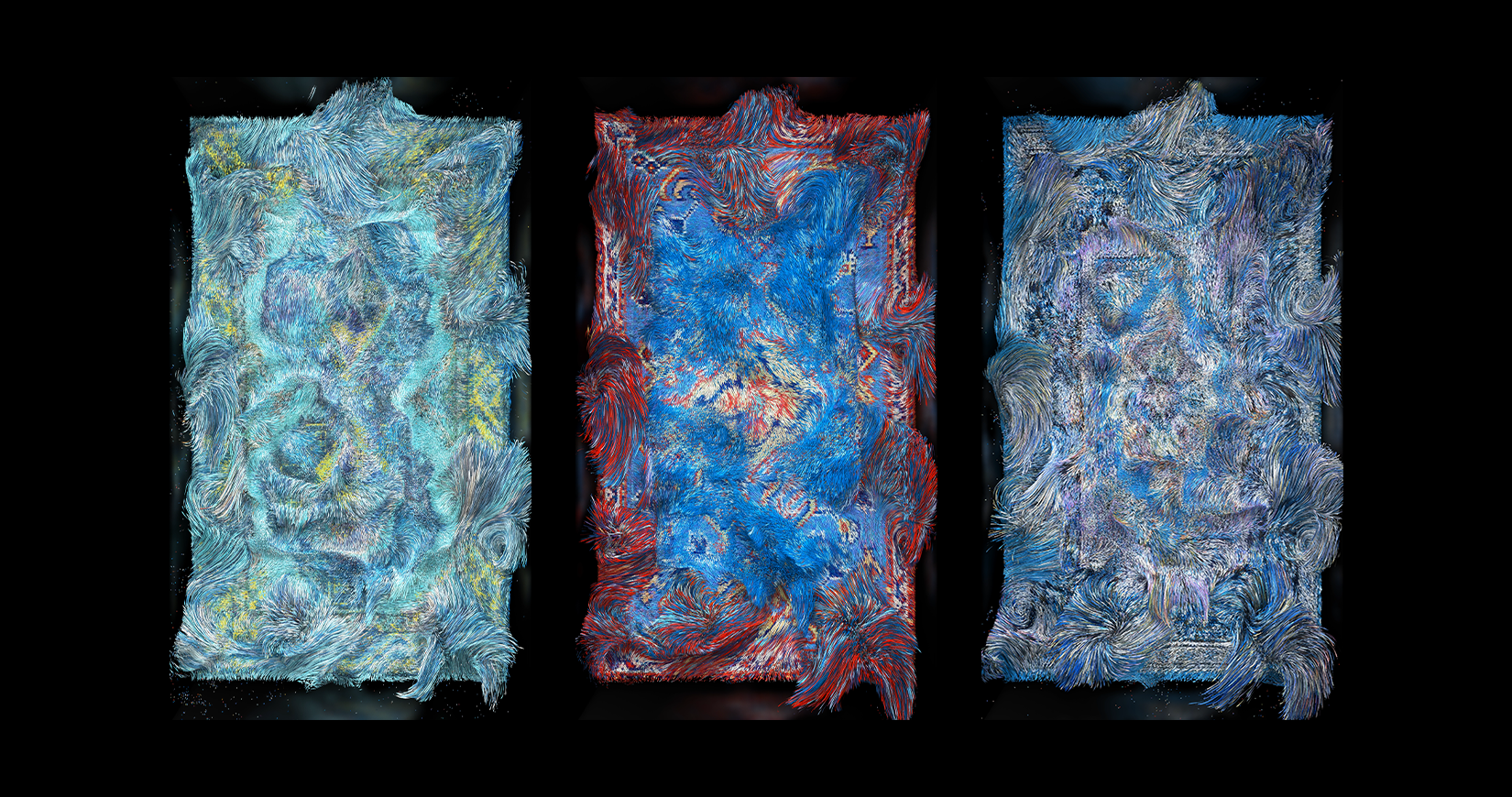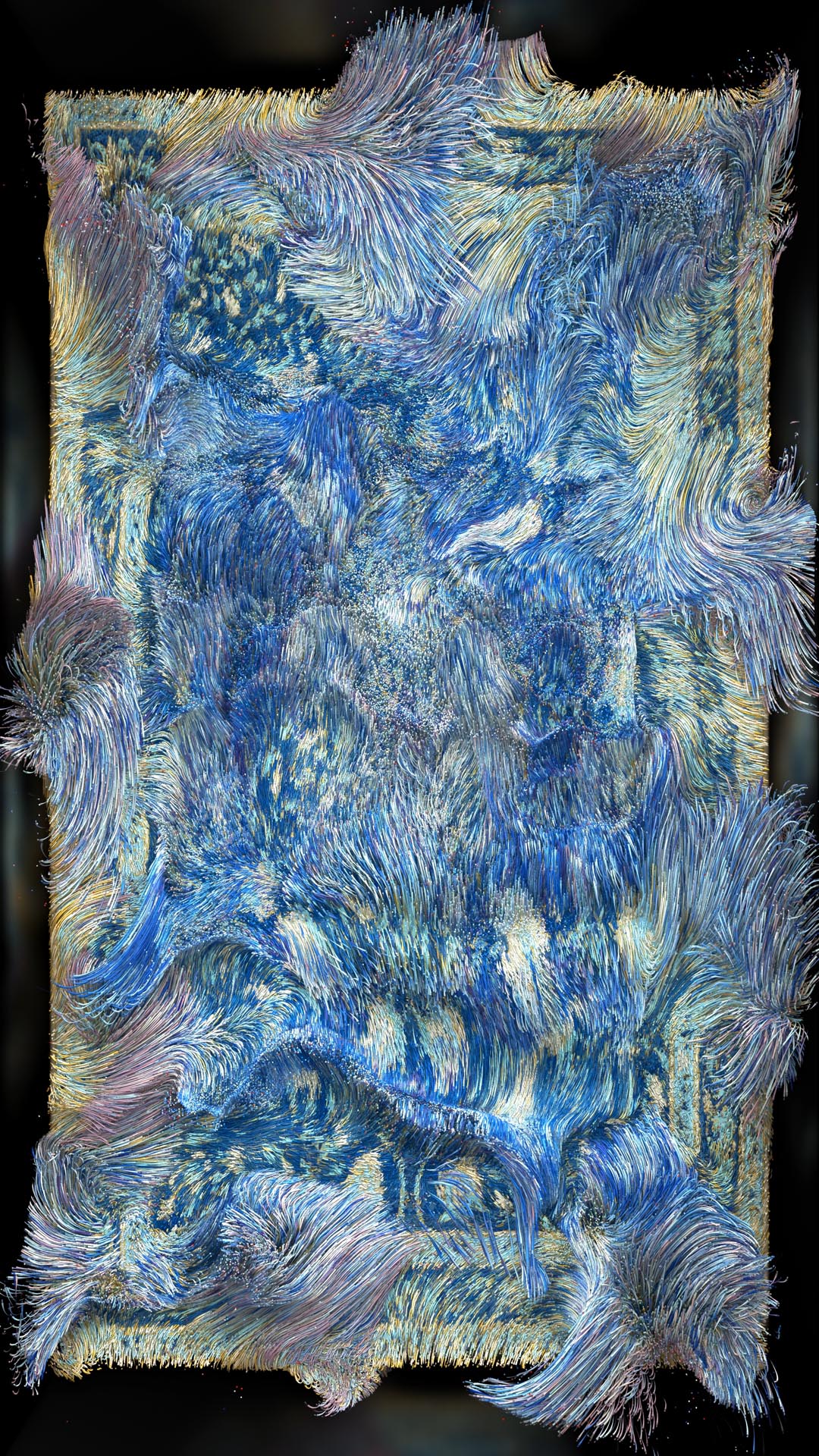Copyright © 2025 Motivate Media Group. All rights reserved.
Orkhan Mammadov uses digital art to raise awareness on the importance of cultural heritage
The artist's works uses images of Azerbaijani carpets and other aesthetics from the East

“I am a creative technologist,” begins digital artist Orkhan Mammadov, who has been a pioneer in the digital arts sphere in his native Azerbaijan since 2013 through his first exhibition with Baku-based gallery YARAT. “If we talk conceptually, my paint is data, my brush is algorithms, and the displays are my canvas.” Mammadov’s works are a blend of his Azerbaijani heritage, along with popular aesthetics and references to surrealism, which combine to become Artificial Intelligence (AI) and Machine Learning (ML)-based installations.

Mammadov’s solo presentation with London-based GAZELL.iO, titled ‘Singularity in Heritage’, was shown during Art Dubai Digital, the fair’s first experience of showcasing a body of digital artworks under the curation of Chris Fussner. Offering a glimpse into the artist’s ongoing research project and autonomous AI art – which was first shown at the Venice Contemporary Biennale in 2019 and the Moscow International Art Biennale – it features a series of video works that are the result of an AI algorithm designed by the artist to understand and find similarities between carpet designs and traditional ornamentation across the Middle East. After processing over 150,000 archival images of carpets, rugs, kilims, miniature paintings and ornamental patterns found across museums and libraries worldwide, a neural network computing system brings together this amalgamation of heritage through a digital lens, enabling the viewer to encounter a visual history of traditional carpet designs – making them the first-ever carpets to be designed in the metaverse.
Historically, carpets, miniature paintings and decorative oriental patterns have played a significant role in forming Azerbaijan’s heritage and aesthetics. And while the Middle East is home to a wide range of carpet traditions, many of them share similarities such as geometric patterns, floral motifs and calligraphic shapes.

“Perhaps with machine intelligence, we can redefine the concept of repetition,” Mammadov suggests. “The installation’s visual component imitates traditional Azerbaijani patterns. As a result, viewers see how AI builds new alternatives. These alternatives have a synthetic nature that has nothing to do with the history of authentic ornament patterns. AI imitates and fakes a traditional learning process [that is] usually handed down from generation to generation.
“By accessing the data of authentic ornament images, AI becomes an independent master that can invent new ideas to update culture,” he continues. “Besides symbols, AI generates new concepts and meanings. It blurs the boundaries between [what is] real and [what is] fake. These actions further prove cultural development, as non-human intelligence replaces traditional craft tools.”
Mammadov likens his creative process to “painting with data”, and although the crafting process is executed entirely through digital means, tangible heritage is vital to his work. “The main goal that I want to achieve through my art is to remind visitors of the value of cultural heritage,” he concludes.
The Latest
Textures That Transform
Aura Living’s AW24 collection showcases the elegance of contrast and harmony
Form Meets Function
Laufen prioritises design, functionality and sustainability in its latest collections
Preserving Culture, Inspiring Creativity
Discover the Legacy of a Saudi Art Space: Prince Faisal bin Fahd Arts Hall explores the Hall’s enduring influence on the cultural fabric of Saudi Arabia
Channelling the Dada Spirit
Free-spirited and creative, The Home Hotel in Zurich injects a sense of whimsy into a former paper factory
id Most Wanted- January 2025
Falaj Collection by Aljoud Lootah Design
Things to Covet in January
identity selects warm-toned furniture pieces and objets that align with Pantone’s colour of the year
Shaping the Future of Workspaces by MillerKnoll
Stacy Stewart, Regional Director Middle East & Africa of MillerKnoll discusses the future and evolution of design in workspaces with identity.
Shaping Urban Transformation
Gensler’s Design Forecast Report 2025 identifies the top global design trends that will impact the real estate and built environment this year
Unveiling Attainable Luxury
Kamdar Developments has launched 105 Residences, a new high-end development in Jumeirah Village Circle.
The Muse
Located in the heart of Jumeirah Garden City, formerly known as ‘New Satwa’, The Muse adds to the urban fabric of the area
Cultural Immersion Meets Refined Luxury
The Chedi Hegra opens its doors in AlUla’s UNESCO World Heritage Site
Redefining Coastal Luxury
Sunshine Bay on Al Marjan island combines seaside views, exceptional design, and world-class amenities to create a unique waterfront haven
















